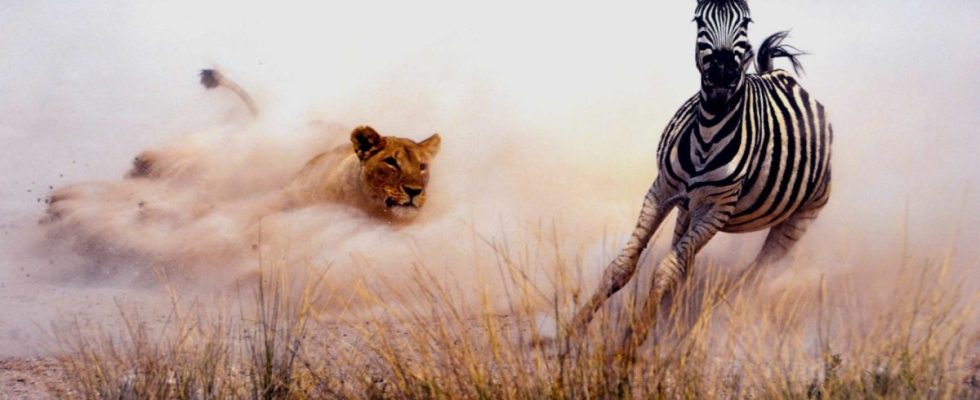At first glance, big-headed ants don’t seem particularly dangerous. The workers are only 2.5 millimeters small and, unlike many other species, cannot even spray formic acid. The soldiers of Pheidole megacephala Although they grow a little larger and have a broad head, which gave the whole species its name, they don’t really appear threatening. This is deceptive.
According to the International Union for Conservation of Nature (IUCN), big-headed ants are among the hundred worst invasive species in the world. According to a study in the current issue of the science journal Science The small insects can even force lions to eat fewer zebras.
According to the current study, it all started when fat-headed ants drove out another species of ant, the acacia ants (Crematogaster), from part of the Ol Pejeta Conservancy, a protected area in northern Kenya. “They overwhelm Crematogaster in numbers and destroy them by killing adult ants and eating eggs, larvae and pupae,” write the researchers led by biologist Douglas Kamaru from the US University of Wyoming Science.
Acacia ants even defend “their” tree against elephants
In this way, the attackers destroyed the community that acacia ants normally form with acacia trees and from which both the insects and the plants benefit. Biologists speak of mutualism. The acacia trees offer the ants protection in the form of hollow thorns in which the insects live and food in the form of sweet nectar that emerges from the leaf stalks. In return, the ants defend “their” acacia tree against all animals that want to nibble on the tree. The masses of ants that move out at the slightest vibration can even send elephants fleeing.
But after the big-headed ants had driven away the acacia’s bodyguards, the plants were defenseless against the appetites of large herbivores: According to the study, elephants ate the trees five to seven times as often or even snapped the trees completely. The study authors found this out by comparing those parts of the protected area where the big-headed ants had taken over with those where there were still acacia ants.
According to the researchers, the elephants decimated the number of acacia trees in the fat-headed ants’ territory so dramatically that a more open landscape with significantly fewer trees was created. This robbed the lions of hiding places from which they had launched surprise attacks on their favorite prey – zebras. According to the study results, the number of zebras killed by lions fell by around a third.
Whether and how the lions compensate for this is not entirely clear, writes Kaitlyn Gaynor from the University of British Columbia in Vancouver, Canada, in an accompanying commentary Science. According to the study authors, there are indications that the big cats have changed their prey pattern and are now hunting more buffalo. Possibly because they are slower than zebras and the big cats catch them without surprising them.
The study in Science is one of the few studies in which it has been possible to understand step by step how a seemingly small change in the species spectrum of an ecosystem can have major effects. In most cases, it is “almost impossible to attribute an observed system-wide change to a specific cause in the chain,” writes Gaynor. Often there is simply not enough known about the different creatures in an ecosystem to be able to put the puzzle together as completely as Douglas Kamaru’s team managed to do.

